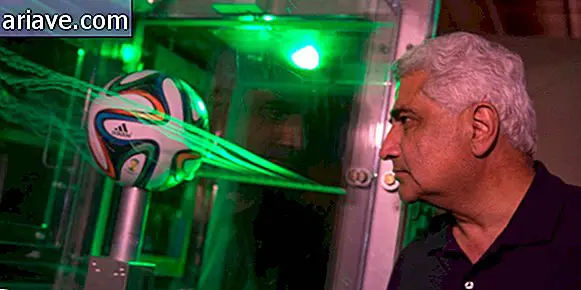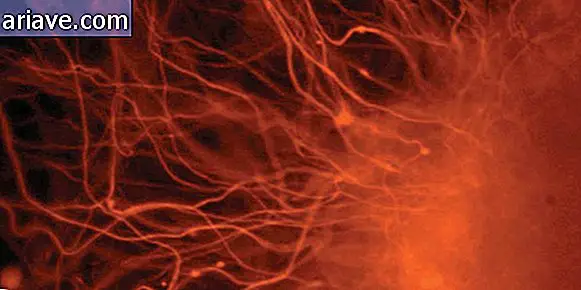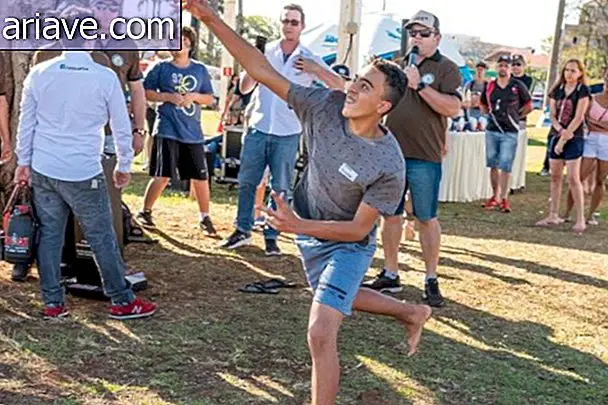Hero's Journey: The Narrative Model Behind Great Characters
Creating a story can seem like a daunting task, and indeed it is. Writers and writers, when starting a new narrative, have to choose their characters well and, of course, their particularities.
An interesting thing that can guide the creation of the most different narratives is a communication scheme known as “Hero's Journey”, which is nothing more than a kind of advance narrative script, with emphasis, obviously, on the construction of the hero of story.

Talking about the Hero's Journey implies quoting Joseph Campbell's “The Power of Myth, ” one of the greatest theorists on the subject. In this work, the construction of the hero is highlighted, and in later works, such as "Journey of the Hero" by journalist Monica Martinez, we can reevaluate not only the role of the hero, but its importance in great narratives and also in journalistic texts, especially within the segment that is known as Literary Journalism.
Knowing this storytelling program is important for readers, writers, and even people who just seek to improve their writing and interpretation skills.
Of course, you will only understand the basis of the hero's journey when you know how it works, and first of all, we start with some information: characters like Frodo from “Lord of the Rings”, Harry Potter, and Katniss from “Games Hunger ”are perfect examples of what we want to explain here.

The three of them go through a trial moment, in which they need to show that they have courage and are willing to overcome their fears in the name of a community. Moreover, these characters experience, beyond trial, overcoming, reward and victory.
Sounds simple and even kinda obvious, doesn't it? What you do not know is that all this is divided into 12 steps, separated into three distinct acts. Are you curious? Then check out the following division, with the Harry Potter saga as an example:
Act 1

Step 1 - Ordinary World: Here, the hero's routine is presented. It is the usual introduction of the story. Harry Potter is presented as just another ordinary boy, who lives in a basement under the stairs and is raised by his crazy uncles.
Step 2 - Call to Adventure: Some unexpected and unusual event happens and breaks the hero's routine. Owls start handing letters to Harry, trying to get Harry to study at Hogwarts.
Step 3 - Refusal to Call: At this time, the hero is either prevented from getting involved or chooses not to hear the call to adventure, preferring to keep his life quiet. Here the one who refuses Harry's call is his uncle, who forbids him to go to wizarding school.
Step 4 - Meeting with the Mentor: Since the call has been refused, a mentor or situation arises that forces the hero to make a decision. In the case of Harry Potter, this is when the character receives a visit from Hagrid, who ends up escorting Harry to Hogwarts.
Act 2

Step 5 - Threshold Crossing: This is the moment when the hero decides to enter a new world. This decision can be made even against the will of the hero. That's when Harry crosses the bar wall and reaches the wizarding universe through the diagonal alley.
Step 6 - Tests, Allies, and Enemies: This is the longest point in the narrative, where the plot develops and the hero will be tested, aided, and confronted by his enemies. In the case of Harry Potter, it's the little boy's early days in the new school, meeting people, teachers, making enemies, and discovering the philosopher's stone.
Step 7 - Goal Approach: The hero comes close to completing his mission, but the tension gets higher and there is suspense about completion. Harry crosses the key room with his friends and they win the Warlock Chess. Then Harry meets Quirrel and Voldermort.
Step 8 - Maximum Trial: Here comes the height of the crisis. That's when Harry uses the magic he received from his mother when facing Professor Quirrell.
Step 9 - Reward Achievement : The name says it all. After the greatest trial of the hero's journey, the character earns his reward. That's when Harry finds the philosopher's stone and beats Quirrell. At this point, Voldemort is weakened and forced to hide.
Act 3

Step 10 - Way Back: This part is usually the shortest part of the narrative and, in some cases, doesn't even exist. This is when the hero returns to his home world after reaching his goal. Harry Potter stays at Hogwarts until he recovers and then returns to the Muggle universe.
Step 11 - Debugging / Resurrection: At this point the hero may face a new dilemma, something that has not been well resolved previously. It is a kind of secondary plot that rescues the suspense of the narrative. In Harry's case, that's when he and his friends win the dispute between the houses, adding points to Gryffindor.
Step 12 - The Transformed Return: It is the closing of the narrative, the moment when the hero returns home, transformed by the experiences he has lived and makes it clear that he is no longer the same person. Harry finally returns to the Muggle world and says goodbye to the school students. It is evident that the relationship of the adolescent wizard with his uncles has been changed forever.
***
So, did you already know this narrative model? In addition to Harry Potter, Frodo and Katniss, there are many other characters that clearly show the hero's journey practice. Do you remember any more? Tell us in the comments!











